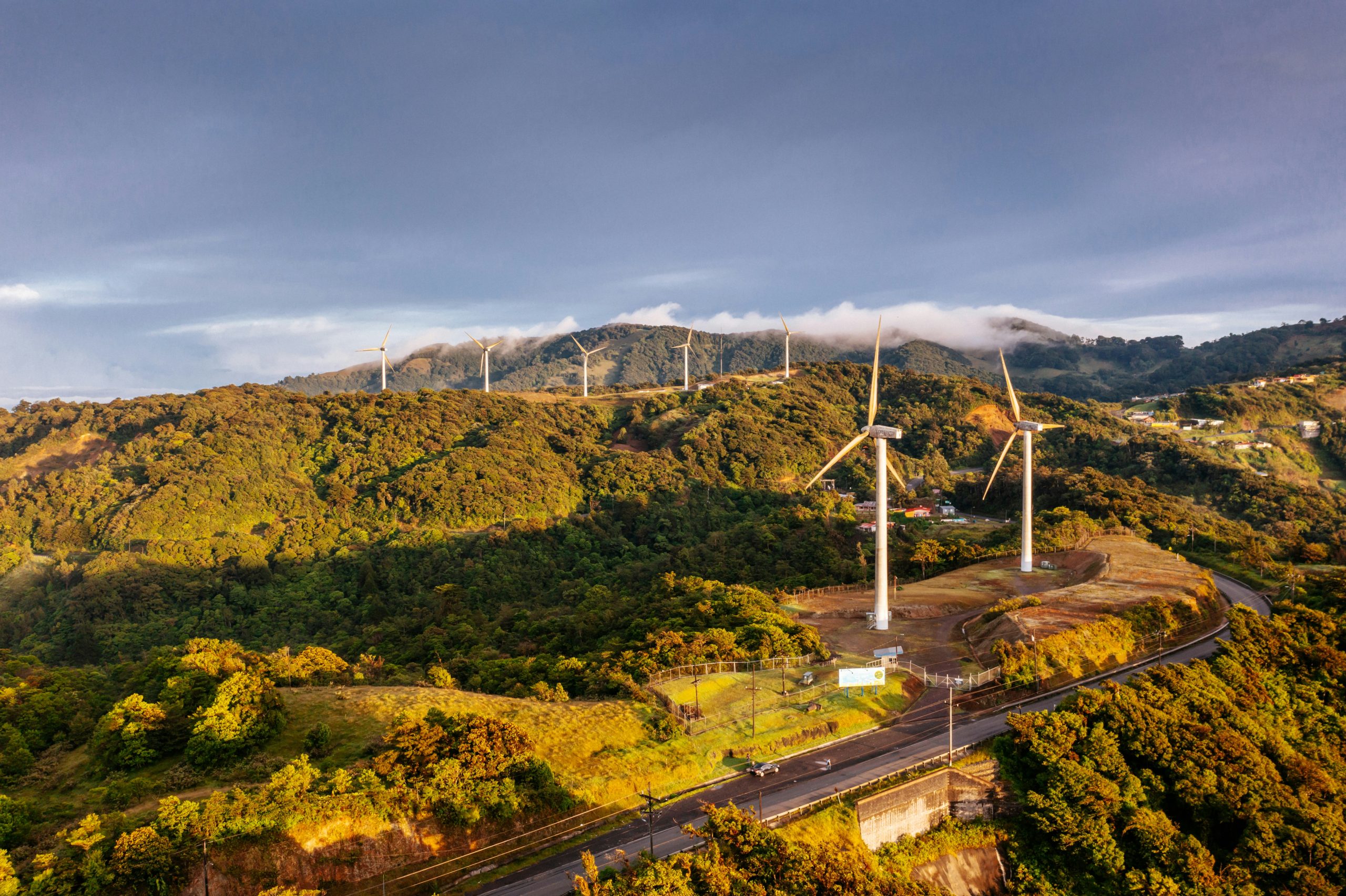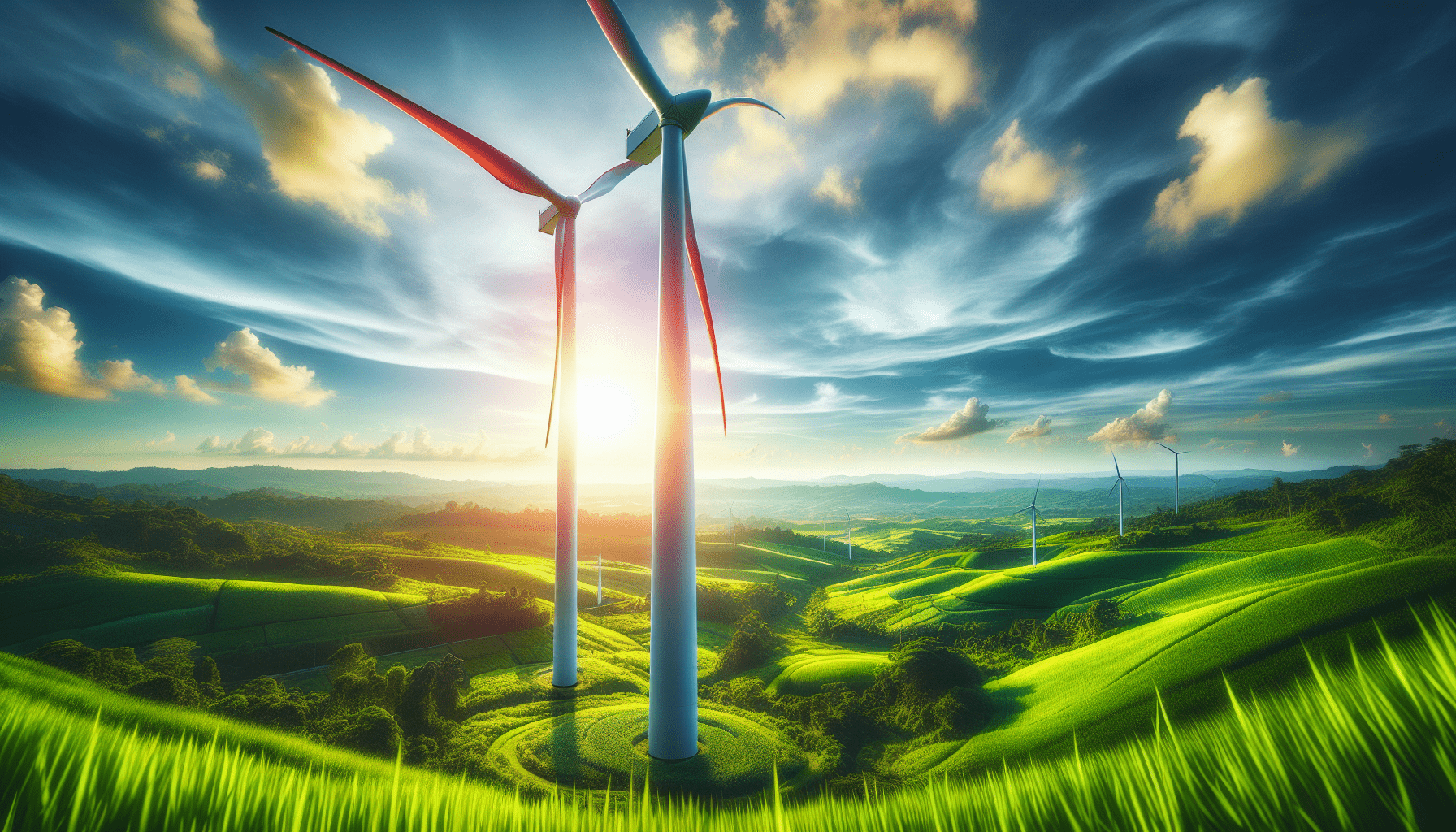In “How Does Renewable Energy Impact The Environment?”, we explore the positive and negative effects of renewable energy sources on our planet. Renewable energy, such as solar, wind, and hydroelectric power, presents us with opportunities to reduce greenhouse gas emissions and combat climate change. However, we must also consider the environmental costs associated with the production and deployment of these technologies. Join us as we delve into the complexities and weigh the benefits and drawbacks of renewable energy, aiming for a sustainable future we can all thrive in. Have you ever wondered how renewable energy impacts the environment? As we collectively seek solutions to mitigate climate change and reduce our carbon footprint, renewable energy sources emerge as a beacon of hope. However, understanding their true environmental impacts requires us to look beyond the buzzwords and delve into the details.
What is Renewable Energy?
Renewable energy comes from natural sources that replenish themselves over short periods relative to a human lifetime. Solar, wind, hydroelectric, geothermal, and biomass energy are some prime examples. Given their sustainable nature, they are often seen as the antidote to our dependence on fossil fuels, which are finite and environmentally damaging.
Types of Renewable Energy
To get started, let’s break down the different types of renewable energy:
| Type | Description |
|---|---|
| Solar Energy | Energy harnessed from the sun using photovoltaic cells or solar thermal systems. |
| Wind Energy | Energy generated by wind turbines converting wind kinetic energy into electricity. |
| Hydroelectric | Power derived from the flow of water, typically involving dams. |
| Geothermal | Energy extracted from the heat stored below the earth’s surface. |
| Biomass Energy | Energy from organic materials like plant and animal waste. |
Why Transition to Renewable Energy?
Why should we consider switching from fossil fuels to renewable energy sources? The most compelling reasons include decreasing greenhouse gas emissions, combatting climate change, improving public health, and achieving energy independence.
Environmental Benefits
Despite debates, transitioning to renewable energy offers numerous environmental benefits.
Reduction in Greenhouse Gas Emissions
One of the most significant advantages is the reduction in greenhouse gas emissions. Burning fossil fuels releases large amounts of carbon dioxide (CO2) and other harmful gases into our atmosphere, exacerbating the greenhouse effect and global warming. Renewable energy sources generate significantly lower emissions, if any. Solar and wind power, for instance, produce no direct emissions during operation.
Decreased Air Pollution
Fossil fuel combustion isn’t just a problem for the climate; it pollutes the air we breathe, contributing to respiratory illnesses and other health issues. Renewable energy sources, especially solar and wind, help decrease air pollution since they do not involve combustion.
Less Water Consumption
Energy generation from coal, natural gas, and nuclear processes often requires significant water for cooling and other purposes. Renewable sources such as solar and wind use minimal water, thus conserving this precious resource.
Biodiversity Preservation
Transitioning to renewable energy can help protect biodiversity. By reducing air and water pollution and mitigating climate change, we can create healthier ecosystems. Moreover, resources like solar and wind don’t require extensive mining or drilling efforts that can devastate local environments.

Potential Environmental Drawbacks
While the benefits are clear, it’s essential to also consider the potential environmental drawbacks of renewable energy.
Land Use and Habitat Displacement
Renewable energy infrastructure, particularly large-scale projects, can require considerable land. Solar farms and wind turbines often require large tracts of land, potentially leading to habitat displacement for wildlife.
Resource Extraction
Though generating renewable energy is generally cleaner, the initial production of solar panels, wind turbines, and batteries involves mining and resource extraction that can be harmful to the environment if not managed responsibly.
E-Waste Concerns
With the life span of components like solar panels, batteries, and wind turbines spanning a few decades, we must eventually address the issue of electronic waste. Proper recycling and disposal methods are crucial to mitigating this concern.
Impacts on Local Wildlife
Wind turbines have been scrutinized for their impact on birds and bats, while hydroelectric dams can interfere with aquatic ecosystems. While these issues are often less severe than those caused by fossil fuels, they still necessitate consideration and mitigation strategies.
Mitigating Environmental Drawbacks
We acknowledge that these drawbacks pose real challenges but they are not insurmountable. Let’s dive into how we can mitigate these impacts.
Smart Land Use Planning
By strategically selecting sites for renewable energy projects, we can minimize land use conflicts and habitat displacement. Utilizing rooftops, degraded lands, or hybrid systems that allow land to be used for both agriculture and energy production can make a significant difference.
Sustainable Materials and Manufacturing
To minimize the environmental impact of producing renewable energy infrastructure, the industry must focus on sustainable sourcing and manufacturing practices. Innovations in material science and recycling can reduce the need for virgin materials and lessen environmental degradation.
Wildlife-Friendly Technology
Newer technologies aim to reduce the negative impact on wildlife. For example, advancements in wind turbine design can help decrease bird and bat fatalities, while fish ladders and improved water flow management can make hydroelectric dams more aquatic-friendly.
Robust Recycling Programs
Investing in robust recycling programs is essential for managing e-waste. Strategies to reclaim valuable materials from expired solar panels, batteries, and wind turbines can dramatically cut down on potential waste and reduce the need for new resource extraction.

Economic Impacts of Renewable Energy
While we primarily focus on the environmental impacts, it’s also crucial to consider the economic aspects.
Job Creation
Renewable energy sectors are significant job creators. Solar and wind industries employ millions of people globally in various capacities from manufacturing and installation to maintenance. This job creation can foster economic growth in regions worldwide.
Energy Prices and Market Stability
Renewable energy can help stabilize energy prices. Unlike fossil fuels, which are subject to market fluctuations and geopolitical tensions, renewable energy sources are abundant and steadily priced. Besides, as technology progresses, the cost of renewable energy continues to decline.
Investment in Innovation
Investing in renewable energy spurs innovation. Countries and companies that lead in this field can gain a competitive edge, fostering advancements not only in energy but also in related sectors like storage technologies, electric vehicles, and smart grids.
Social and Health Benefits
Besides economic and environmental benefits, renewable energy provides numerous social and health advantages.
Public Health Improvement
By reducing air pollution, renewable energy can lead to significant health improvements. Lower levels of pollutants can lessen respiratory and cardiovascular problems, contributing to lower healthcare costs and improved quality of life.
Energy Access and Equity
Renewable energy sources can be decentralized, meaning we can deploy them in isolated or underdeveloped areas lacking access to traditional energy grids. This brings electricity, and thus economic opportunities, to millions of people worldwide.

Case Studies
To fully appreciate how renewable energy impacts the environment, it helps to examine some real-life examples.
Denmark: Wind Power Success
Denmark is a stellar example of a country harnessing the wind. Wind energy meets over 40% of Denmark’s electricity needs, significantly reducing their carbon emissions. Moreover, the country has faced few adverse environmental impacts by incorporating extensive planning and community involvement.
Iceland: Geothermal Energy
Iceland harnesses geothermal energy to provide nearly 100% of its energy needs. By harnessing the earth’s heat, Iceland has drastically reduced its reliance on fossil fuels and improved local air quality. Their geothermal plants are situated in remote areas, reducing human-wildlife conflicts.
China: Solar Power
China has rapidly expanded its solar power capabilities. Entire cities are now powered by large-scale solar farms, leading to a significant reduction in their carbon footprint. Moreover, China is investing heavily in recycling programs to tackle the potential issue of solar panel waste.
Future of Renewable Energy
The future is promising for renewable energy, but it comes with challenges that we need to address collectively.
Technological Advancements
Continued advancements in technology can reduce the environmental footprint of renewable energy. Innovations like more efficient solar cells, higher capacity batteries, and improved grid management systems are crucial for maximizing benefits while minimizing drawbacks.
Policy and Legislation
Effective policies and legislation can help mitigate the environmental impacts of renewable energy. This can include subsidies for sustainable manufacturing, incentives for recycling programs, and regulations that enforce wildlife-friendly technology designs. International cooperation is also paramount to achieving widespread success.
Consumer and Corporate Responsibility
We, as consumers and businesses, also play a vital role. Supporting companies and products that prioritize sustainability, and advocating for cleaner energy sources, can contribute significantly to the transition towards renewable energy.

Conclusion
In summary, renewable energy’s impact on the environment involves a multifaceted balance of benefits and drawbacks. While it offers substantial advantages in reducing greenhouse gas emissions, decreasing air pollution, and conserving water, it also poses challenges like land use, resource extraction, and potential e-waste.
However, with smart planning, technological innovation, and effective policy-making, we can mitigate these drawbacks and maximize the benefits. Transitioning to renewable energy isn’t just an environmental imperative; it’s socially and economically beneficial as well.
As we move forward, let’s continue to support, innovate, and advocate for renewable energy to build a sustainable future for generations to come. So, what do you think? Is renewable energy worth the effort? We believe it is, and we hope you do too.



